Tag Archive: Driving Safety
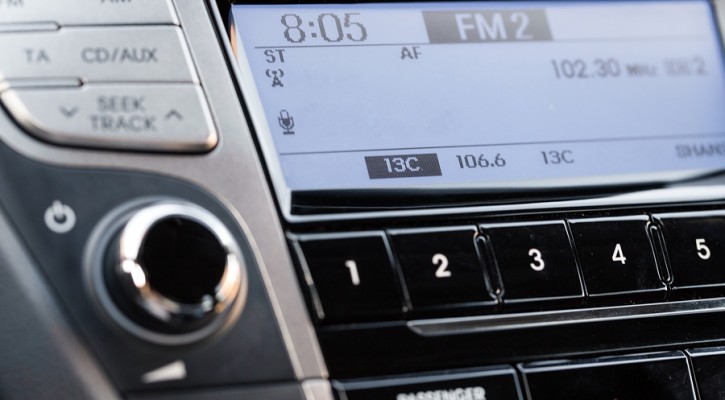
Is The Car Radio Distracting?
May 2, 2016
In still more research on distracted driving, researchers in the United Kingdom looked at whether or not the car radio could be distracting to drivers. The researchers from University College Dublin, Ireland conducted a small scale study using 36 drivers in a full size driving simulator to test whether or not the car radio interfered with a driver’s attention enough to pose a danger. The data seems to support past research that has been conducted on the use of cell phones while driving.
The study was designed to test what’s known as the “perceptual load theory of attention.” That theory states that people only have a limited amount of attention to work with and, once they reach their limit, they can’t process any more information. In this case, the researchers wanted to see if information overload by one sense (hearing) could affect another sense (sight).
The subjects were divided into two groups; a “low attention load” and a “high attention load.” Those in the low attention load group were told to listen to the traffic report on the radio and to note when the traffic reporters switched from male to female, a task that didn’t require a lot of attention.
Those in the high attention load group were told to listen for traffic reports regarding a specific highway; a task that required a good deal more attention. While both groups drove over the simulated course, the researchers would randomly place a large gorilla or an elephant at the side of the road.
The researchers found that 71 percent of those in the low attention load group noticed the gorilla or elephant. In the high attention load group, only 23 percent noticed the large, misplaced animals on the side of the road. The high attention load group also had greater difficulty in obeying yield signs and maintaining proper speed and lane position to avoid hazards.
The fact that the high attention load group experienced difficulty while listening to the radio for comprehension parallels the results of a study conducted by Carnegie Melon researchers in 2008. In that study, subjects were tested first while driving over a simulated driving course and then, when driving over a similar course while carrying on a simulated cell phone conversation; all while their brains were being scanned by an MRI. The study was designed to show what areas of the brain showed the most activity while performing a task. In the first test, without the use of a cell phone, the area of the brain that controlled for spacial awareness (where your body is in relation to other objects around it) was the most active. In the second part of the study where subjects drove while carrying on a simulated cell phone conversation, the area of the brain that showed the most activity was the area that controlled language comprehension and the activity in the spacial awareness area was reduced by 37 percent.
That convinced the Carnegie Melon researchers that “multi-tasking” is a myth; the brain isn’t capable of handling two or more tasks equally at the same time. To concentrate on one task the brain has to rob attention from another control center.
For most drivers, listening to the car radio is a very low attention load activity. For most, listening to the car radio is just background noise. If the average driver were asked what song just played or what product was just advertised, he or she would be unable to say. Usually, the car radio isn’t a distraction at all but, when listening for comprehension, the brain has to shift processing power away from paying attention to the road to paying attention to the radio. If you’ve ever turned down or turned off the car radio while looking for an address or navigating through a strange city, you’re probably instinctively aware of this fact. Paying attention to a cell phone conversation instead of the road ahead is the same thing.
For more information, visit: Does listening to the radio make driving more dangerous?
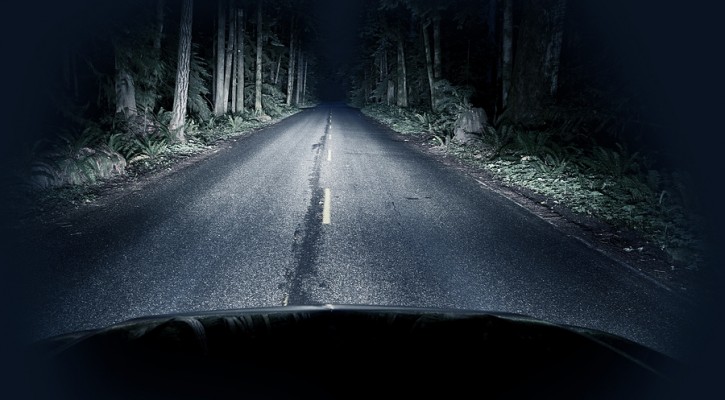
Headlights Dim? It’s Not You, It’s Your Car
March 31, 2016
If you feel you can’t see as well while driving at night, it may not be your vision but your car’s headlights. For the first time, along with their normal crash tests, the Insurance Institute for Highway Safety (IIHS), tested headlights on the new 2016 model cars. The results were not good.
When driving in the dark, if you encounter a hazard on the road, you need to be able to stop within the area illuminated by your headlights. If you’re traveling at 50 mph, that means your headlights need to illuminate more than 175 feet ahead of you if you’re going to be able to stop in time to avoid a crash with the hazard ahead. At 60 mph, you’ll need light up at least 260 feet ahead. If your headlights only illuminate 100 feet ahead, you’ll need to slow down to less than 40 mph in order to avoid a crash with an unseen object ahead.
To test the headlights, the IIHS conducted tests on their test track using a special device to measure the lights on both low and high beams. The tests were conducted under five different approach scenarios: traveling straight, a sharp left curve, a sharp right curve, a gradual left curve and a gradual right curve. The device also measured the glare of the low beam headlights to make sure they didn’t blind oncoming drivers.
The headlights were tested as they were delivered from the vehicle manufacturer and were not adjusted in any way.
Headlights were measured against an ideal beam and points were subtracted to determine the rating. More weight was given to low beam headlights because they’re used most often. More weight was also given to measurements on straightaways because more collisions happen on straight roads than on curved.
The IIHS rated every combination of headlights as they come from the dealer so, although there were only 31 vehicles, there were a total of 82 headlight ratings. As it does with all of its tests, the IIHS assigned four ratings: good, acceptable, marginal and poor.
Only one vehicle received a “good” rating, the Toyota Prius V when equipped with LED lights and high-beam assist. Eleven vehicles received acceptable ratings, nine received marginal ratings, and ten were given a poor rating.
Among the poor ratings, the BMW 3 series were deemed the worse. When driving in the dark, BMW 3 drivers can’t travel any faster than 35 mph if they want to stop within the area illuminated by the headlights.
For more information, visit: First-ever IIHS headlight ratings show most need improvement
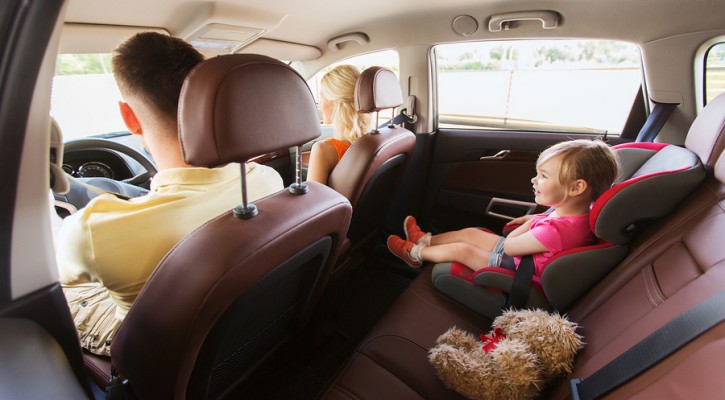
Collapsing Front Seats Pose Danger To Children In Back Seat
March 28, 2016
A recent FairWarning.org article points out that collapsing front seats can pose a serious danger to children in the back seat. While the National Highway Transportation Safety Administration (NHTSA) knows about the issue, they say there’s too little data to initiate any sort of mandate from the federal government to fix the problem.
The problem comes when cars are struck from behind. As the car is suddenly pushed forward, the front seats can collapse and fall backwards. If that should happen, children riding in the back seat can be severely injured when they are struck by the front seat headrest, the seat itself, or by the occupant of the front seat. According to the article, some seats have been known to collapse in a 30 mph crash.
The Insurance Institute for Highway Safety (IIHS) tests seats as part of their crash test regimen for new cars and, in fact, they remove the seats and test them on a sled separately from the car itself. However, the tests concentrate more on how much support the front seat and headrest will provide for its occupant to prevent whiplash and back injuries and not so much on the ability of the seat to remain upright in a higher impact crash.
Parents who are looking for a new car can check the IIHS crash ratings for a particular model and it will show how well the seats performed in rear end crash tests but it’s important to remember that those tests are conducted to simulate a 20 mph crash and that may not indicate how well the seat will perform in a higher speed impact. You can see an example of the seat test here.
For years, NHTSA has advised that because of the dangers posed by airbags to small children, children should be seated in the back seat. According to FairWarning, that advice doesn’t go far enough. They advise that children be placed in the back seat behind an unoccupied front seat or behind the seat with the occupant that weighs less (as in the photo above).
This video shows what can happen in a crash where the front seat collapses and falls back:
For more information, visit: Regulators, Automakers Urged to Warn Parents About Flawed Seats
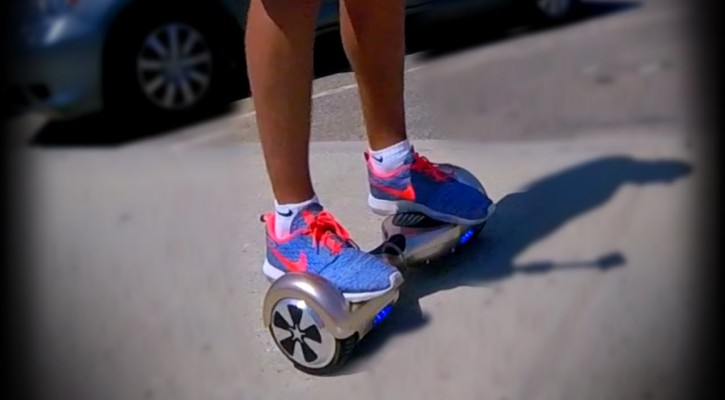
The Dangers Of Hoverboards
January 29, 2016
A week or so ago, as I was driving through my neighborhood, I came up on three kids riding hoverboards in the oncoming lane. The two boys and a girl, who looked to be around 13 years old, were moving along at a pretty good clip. The girl never took her eyes off of her cell phone while she was in my view. I thought, “here’s a crash waiting to happen.”
Hoverboards were the big gift item of the 2015 Christmas season and apparently sold like hotcakes. Just before Christmas, news reports started appearing showing hoverboard batteries that had caught fire and exploded; destroying at least one home in Louisiana. The fires are happening so often that a lot of college campuses banned hoverboards in their dorms.
While the fires are a legitimate cause for concern, a problem we aren’t hearing a lot about is the potential for serious injury among hoverboard users, especially if they take them on the road.
A statement published this week by the chairman of the Consumer Products Safety Commission (CPSC) addressed both the problems of the battery fires and the potential for serious injury by hoverboard users.
At least two teens – one in England and one in Dubai – died when they were thrown from their hoverboards into oncoming traffic. While the CPSC has started collecting data on hoverboard injuries and emergency room (ER) visits, it’s still too early to see if any trends are developing. The only similar activity is skateboarding which leads to an average of 111,000 ER visits by kids under the age of 18 each year. While many of those visits involve sprains, scrapes, and bruises, a significant number also involve traumatic brain injury. In 2014, 28 people were killed in skateboarding related crashes.
One major difference between skateboards and hoverboards is that, unlike skateboards, hoverboards can accelerate on their own depending on the weight and body positioning of the user. New users will have a steep learning curve before they can have total control over the boards.
After a teen in England was killed using a hoverboard, police were quick to remind people that, in the minds of the law, hoverboards are basically Segways without handles and the use of Segways on public property of any kind is illegal. In the US, the technology is so new that most states don’t have laws to cover them yet.
In Florida, if hoverboards are considered to be the same as a Segway without handlebars, they would fall under the law regarding “electric personal assistive mobility devices (EPADs)” and are allowed:
(a) On a road or street where the posted speed limit is 25 miles per hour or less.
(b) On a marked bicycle path.
(c) On any street or road where bicycles are permitted.
(d) At an intersection, to cross a road or street even if the road or street has a posted speed limit of more than 25 miles per hour.
However, if the hoverboard user is under the age of 16, they must wear a bicycle helmet that meets the standards of:
- the American National Standards Institute (ANSI Z Bicycle Helmet Standards);
- the standards of the Snell Memorial Foundation (1984 Standard for Protective Headgear for Use in Bicycling);
- or any other nationally recognized standards for bicycle helmets which are adopted by the department.
Counties, cities and towns can make regulations regarding EPADs and the Department of Transportation can ban their use on roads where they might otherwise be used if it’s felt that the regulations or bans are in the interest of safety.
Children who use hoverboards should:
- Always wear protective equipment such as helmets and knee and elbow pads.
- Always be supervised when riding.
- Restrict their riding to sidewalks and stay out of traffic.
Owners of hoverboards should:
- Never leave the hoverboard to charge overnight without supervision. The charging process increases the risk of a fire.
- Keep a fire extinguisher near the hoverboard charging station.
For additional hoverboard safety recommendations, visit: Statement from the U.S. CPSC Chairman Elliot F. Kaye on the Safety of Hoverboards
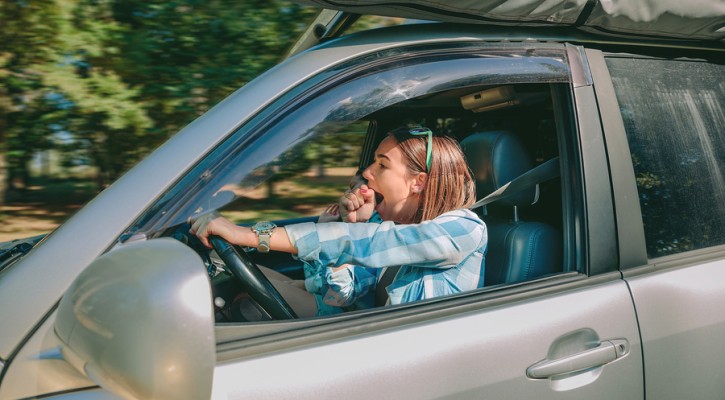
Night Shift Workers At High Risk Driving Home
December 29, 2015
Night shift workers are at greater risk of a crash when driving home from work than day shift workers according to new research conducted by Brigham and Women’s (B&W) Hospital in Boston. The study’s results were published this month in the Proceedings of the National Academy of Sciences.
It has long been known that shift workers, especially those whose shifts rotate between day and night are at greater risk for health problems, including heart attacks. The researchers at B&W felt that night shift workers might suffer a greater risk of involvement in a motor vehicle crash because, no matter how long they had worked the night shift, their natural circadian rhythms were disrupted, preventing them from getting adequate sleep.
Driving drowsy is a major problem among American drivers. According to an American Automobile Association (AAA) study published last year, approximately 6,400 people are killed in 328,000 crashes per year due to drowsy driving. According to the AAA study, drowsy driving was responsible for 21 percent of crashes in which a person was killed and 13 percent of crashes in which a person was hospitalized.
To conduct the research, the researchers recruited night shift workers to drive over a two hour period during daytime immediately following their night shift. The same workers were tested again after getting an adequate night’s sleep. The tests were conducted on a closed test track at the Liberty Mutual Research Institute for Safety.
- During the tests conducted after a night shift, track safety observers had to step in and use emergency braking procedures to prevent a crash in 37.5 percent or one-third of the test drives.
- In 43.8 percent of the test drives, safety observers had to halt the drive prematurely because the test subjects were too sleepy to maintain adequate control of their vehicle.
- Episodes of microsleep (nodding off for three or more seconds) increased with each half hour of the drive.
- Instead of making multiple small-scale steering corrections, subjects made infrequent large-scale steering maneuvers to avoid crossing over into other lanes.
- When tests were conducted after subjects had slept all night, there were no emergency braking interventions or test terminations by the safety observers.
Most of the near crashes and inability to maintain control happened after more than 45 minutes into the two hour drive. The researchers realized that that was a long time but noted that many night shift workers routinely commute more than an hour each way to and from work.
The researchers felt that the safest way to resolve the problem is for employers to provide transportation from the workplace to a central area where night shift workers can get public transportation for the remainder of the trip home.
Read more: High drowsy driving crash risk on daytime commute after night work
